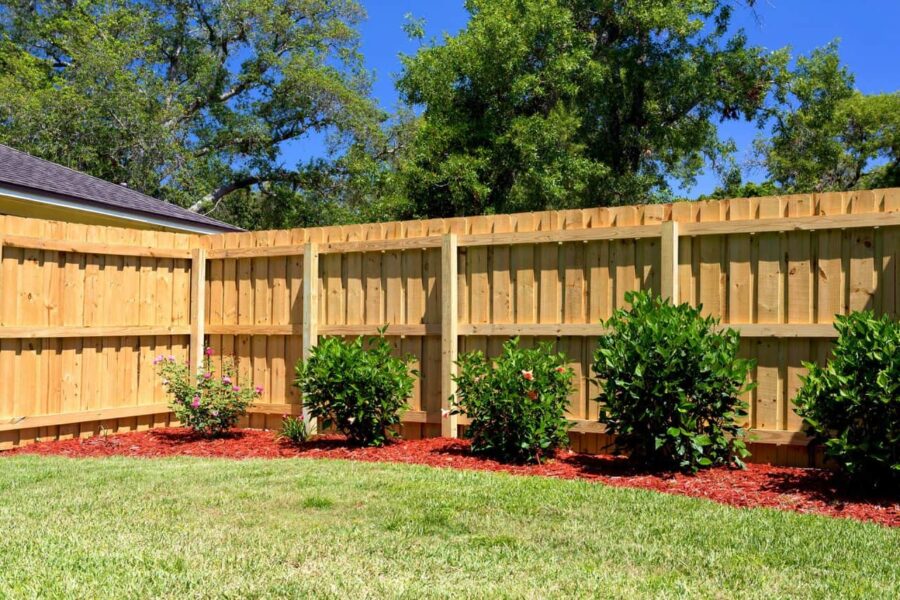Is it Too Late to Stain My Fence Before Winter?

Introduction
When you build a fence over the summer season, you would often be advised to stain it right away. Some would even claim that it’s too late to stain your fence before the winter season arrives. However, all fences are not made the same. You can search for a “fencing company near me” and hire professionals to stain it for you. Let’s check out if it’s too late to stain your fence before winter.
The Discussion
1. Wait for staining –
You shouldn’t stain a newly built fence right away. A new fence is a big investment, and you want it to last a long time. Staining it prematurely can do more harm than good. While the waiting time differs from one fence to another, it usually varies anywhere from a few weeks to a few months. Waiting time is the highest if you’ve built your fence with pressure-treated lumber.
Similar to decks built with pressure-treated timber, it needs to dry out properly over a long period so that the wood can absorb the stain properly. Otherwise, you’re wasting stains. It would wear off very quickly since it won’t be properly absorbed by the wood grain of the saturated wood and damage the wood anyway.
2. It depends on the wood –
All fences aren’t made equal. They are made from different materials. While metal or vinyl fences don’t require a drying period, most wood fences do. If you install a cedar fence, the wait time doesn’t need to be too long. Otherwise, the wood gets excessively weathered and would need extra sanding. On the other hand, pressure-treated wood fences require you to wait for months before you can stain them.
3. Staining after waiting for too long –
Let’s say you’ve waited for too long to stain the wood. The winter season is right here and if you don’t find a way to fix the problem, the wood will be exposed to the harsh weather of the winter season. Fortunately, there’s an easy fix. If you’ve waited for too long and the wood has become gray and weathered, you just need to sand the surface to make it stainable. If that’s not enough, you can also wash the wood with specialty cleaners and sand it down before applying finishing coats.
4. Choosing a stain –
Choose a stain for your wooden fence that would make it last longer and deliver professional quality results. An oil-based stain or a semi-transparent stain works wonders for staining outdoor wooden structures including your fence. These types of stains tint the wood in an elegant way and accentuate the natural grain or texture of the wood. Moreover, these stains are known to use formulas that slow down rot and the growth of mildew. They also protect the wood from harsh UV radiation.
5. Choose the right time to stain your fence –
After choosing the right type of stain, it’s important to choose the right time for staining the fence. Check the weather forecast for next week. Choose a day that would have average temperatures between 50 to 80 degrees with low levels of humidity and no rainfall for the next day. That would be the ideal day for staining the fence. You need to wait for the right time to stain the wood even if it’s just a few days before winter. If the wood is stained at the right time and gets enough time for the stain to dry out, it would easily brave through the harsh winter season.
6. Prepare the fence for staining –
You’ll need to prepare your fence depending on its current condition. If it’s an old fence that has been stained or painted, you can apply stain or finish stripper to the wood to loosen the old varnish and bring up the wood fibers. Before you apply the new stain, it needs to penetrate the wood grain appropriately and that’s why this step is necessary.
You also need to do a water test on the fence to check out if the wood will allow for adequate stain penetration. Spray a small section of the fence lightly with water. If you notice water beads forming on the slats, you need to sand down the wood in the direction of the grain. On the other hand, if the water is readily absorbed into the wood, it’s perfectly ready for staining.
7. Clean your fence and dry it –
Get a high-pressure water nozzle or use a power washer to clean the fence with water. You need to get rid of the debris and dirt from the fence along with residual layers of varnish. If you notice any mold or mildew growth on the fence, treat that section with a diluted bleach solution. Make sure to wear rubber gloves, eyewear, and preferably an industrial mask to protect against the bleach and any vapors that may come out. After the mold or mildew has been treated, clean the wood with a power washer.
8. Stain the fence –
You can stain a fence with a thick natural bristle brush. It can pick up oil-based stains and make them penetrate the wooden fence with ease. Dip the brush in the stain and coat the horizontal fence slats uniformly from left to right. Next, move on to staining the vertical slats from top to bottom. While you’re staining the wood make sure the brush has a wet tip at all times.
Stain just one or two slats at a time so that you don’t need to create overlaps and leave additional marks later on. Once the first coat of the stain is dried off, you can add a couple more coats and finally finish off with a durable sealant coat.
Conclusion
All fences aren’t made equal, and some require a longer drying time than the rest. That’s why you should make sure to wait for the fence to be ready for staining even if it’s just a couple of weeks before the winter season. You can also search for “fencing company near me” and hire pros to do it for you.







